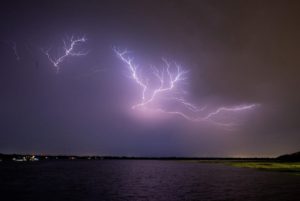TVSS or SPD … Can I Buy a Vowel? Understanding Surge Protection and the Changing Requirements
Leave a CommentSurge Protective Devices (SPD), formerly known as Transient Voltage Surge Suppressors (TVSS) have been around for a long time. The most recognized version is integrated into outlet strips and used to protect sensitive electronics from surges, or higher than expected voltages on the power line. Early versions of these surge strips were known to have problems where internal components could overheat and cause a fire. Thermal protection was added to the designs to greatly reduce the potential for a fire hazard. Such an implementation in an outlet strip is considered a Type 3 SPD. (more…)




